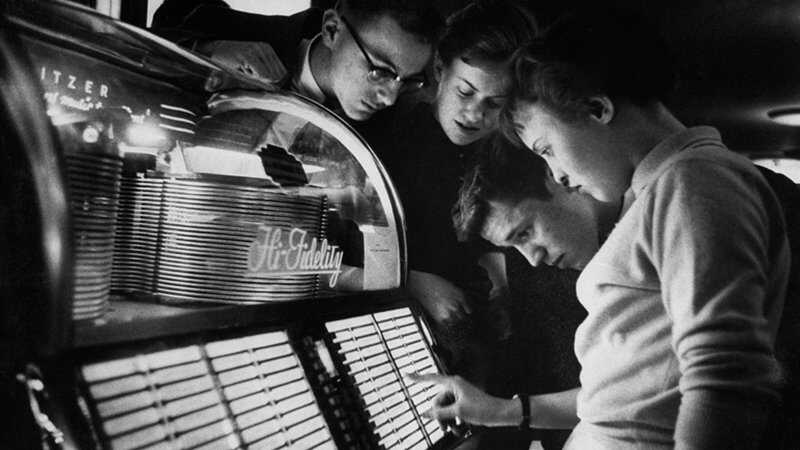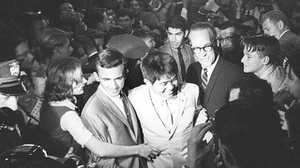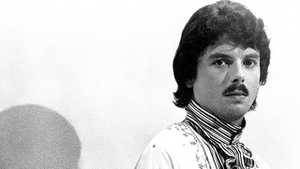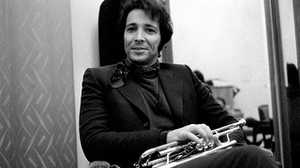The Billboard Hot 100 has been around since 1958. What can we learn from it?
By Tim Riley

“Here we go with the Top 40 hits of the nation this week on American Top 40, the best-selling and most-played songs from the Atlantic to the Pacific, from Canada to Mexico.”
That's how Casey Kasem opened his countdown radio show, American Top 40, in 1970. Kasem, who covered the top 40 for nearly as many years, reading one-liners and dedications in between hits, never impressed anybody as a scholar or music historian. But his show popularized the idea of Billboard's Hot 100 Chart, framing how we heard pop's stories.
At its debut, in August of 1958, Billboard’s Hot 100 was primarily a resource for industry folks. It was, nevertheless, revolutionary, in that it combined three different data streams: singles sales, jukebox spins, and Top 40 airplay. Each metric captured a different dimension of a song’s popularity: while sales figures tracked the passionate fan (read: the person who bought an artist's release during that first week), airplay contributed a more passive indicator, measuring how long songs hung in the ether.
“If you used simply one or the other, you'd notice some radical shifts,” says writer Chris Molanphy, who covers the pop charts for Slate. “But added together, these two yardsticks provide a crude yet useful benchmark."
The hybrid model meant that you couldn’t have a smash just by selling trendy hooks for a few weeks. And perhaps more significantly, it created multiple paths a song could take to number one.
Early in chart history, DJs enjoyed party favors (payola) from record pluggers for airing a potential hit; if it caught on with jukebox plays and sales, it could earn chart status. But hits could also be produced more democratically; "Louie Louie" the Kingsmen’s rhythmically wayward rendition of a Rockin’ Robin Roberts jukebox favorite, piled up the requests at local radio stations before breaking onto the Hot 100 in 1963, where it sat at No. 2 for six straight weeks. The audience, in effect, had steered this accidental groove into a classic hit.
Today, the audience has an even more powerful role in determining hits, and the current Hot 100 harvests a more complicated set of variables. Airplay-only data joined Billboard's data stream in 1998 (for album tracks never released as singles); digital sales in 2005; streaming services like Spotify, Muve Music, Rdio, Rhapsody, and Slacker plays in 2012; while Youtube clicks didn't enter the equation until 2013. iTunes has emerged as digital's largest retailer, as radio continues to deteriorate, swallowed up by custom playlists and streaming algorithms. In an era when Chance the Rapper joins the celebrity elite without a major label contract — and almost every recorded song in history exists online — brain chips broadcasting to your AirPods from your dream state will require even more cosmic methods of measure.
So what do we see when we look at the chart today? What started as an industry resource has long since ceased being useful for a ratings executive or a radio program director; in the age of information, its data isn’t granular enough. Rather, chart critic Chris Molanphy describes the chart as a “commonly understood benchmark, a meeting place between the industry and main street, analogous to the Dow Jones stock index." It also gives artists bragging rights — facts and figures to blast out over social media.
Yet after nearly 60 years of existence, the Billboard Top 100 has more to offer than temporal pleasures; it is an aural record of who we are and where we’ve been. From the ‘50s, when Italian Americans dominated the charts, to the counterculture ballads of the ‘60s, to the revenge of disco in the ‘70s, and the arrival of hip hop in the ‘90s, the Top 100 has diagramed our collective pop unconscious — the fears, needs and desires of a nation. You don't need a weatherman to know which way the wind blows. But a chart can come in handy.

NPR critic, Emerson College Professor of Journalism and Author Tim Riley reviews music for Tom Ashbrook's On Point radio hour. His reviews appear in The New York Times, the Washington Post, The Huffington Post, Slate, Salon, and The independent Journal Radio Silence. In 2016, he won the LA Press Club's Best Book Critic award for his truthdig.com essays.







